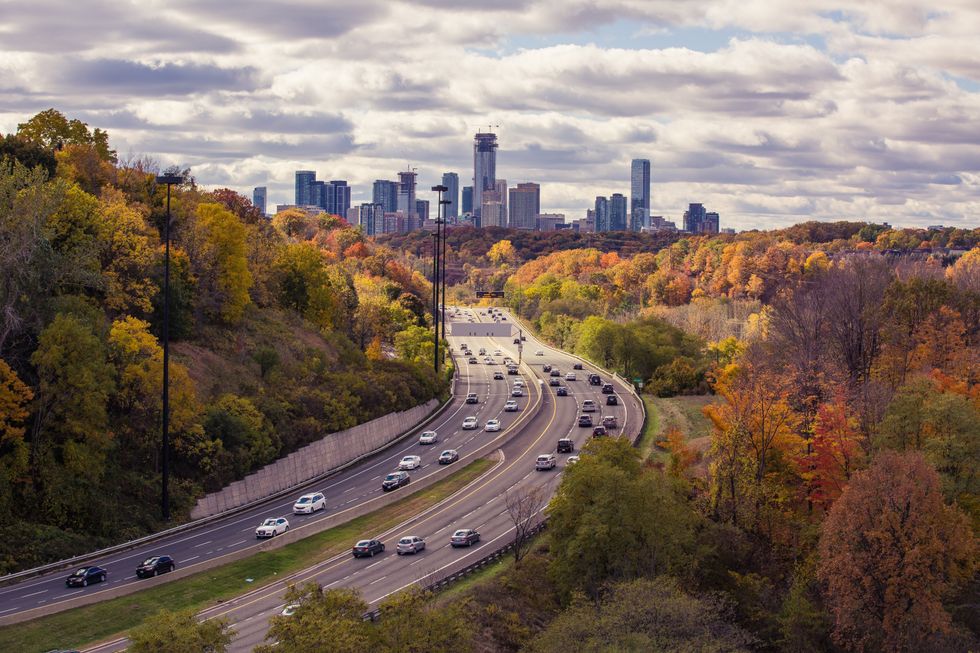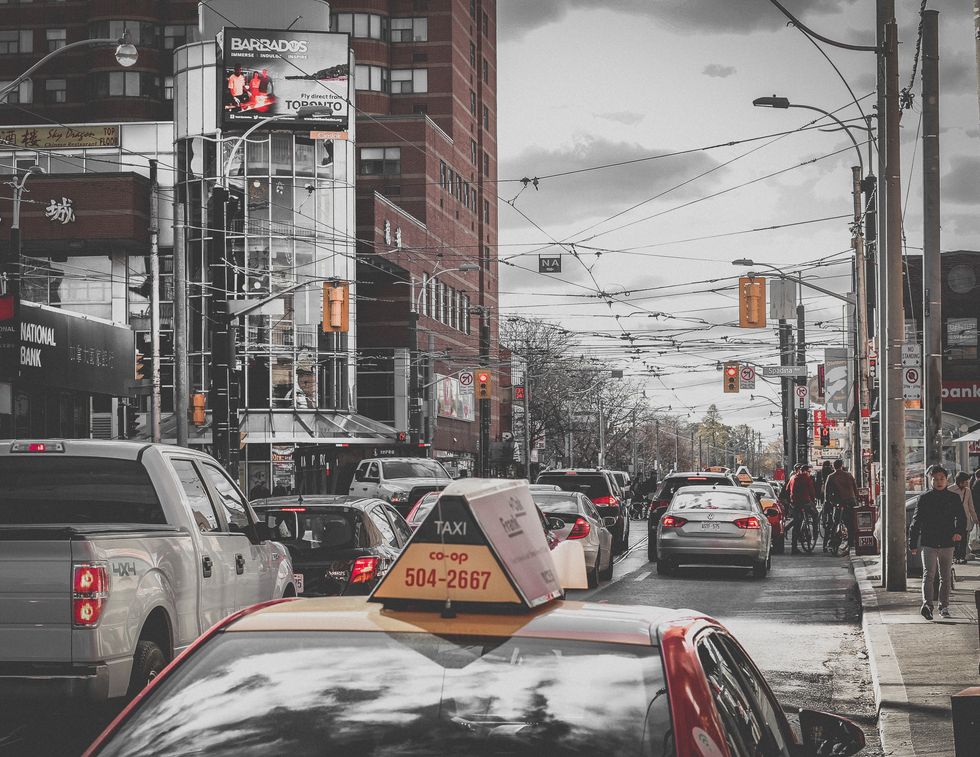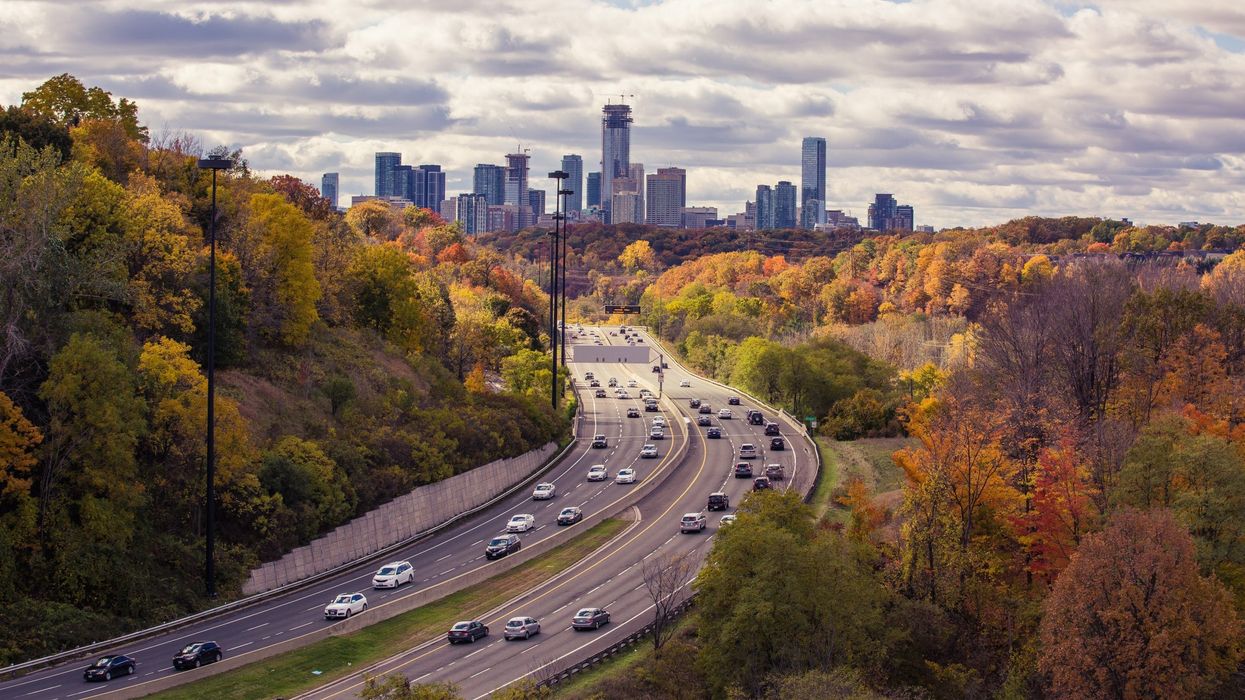As the recent snowstorms reminded us, cars create as many problems as they solve. Just ask the thousands of TTC passengers forced to sit and wait in streetcars blocked by vehicles parked in the middle of the road.
The car has brought us closer than ever to realizing the dream of universal mobility, but at what cost? Increasingly, it seems the price is one we can no longer afford – if we ever could.
READ: Believe It Or Not, The TTC Is Canada’s Best Public Transit System
Unfortunately, we’ve spent most of the last century designing our cities and suburbs, let alone our roads and highways, to accommodate automobiles. At the same time, we meticulously built a landscape that kills and injures thousands every year, that contributes majorly to climate change, that wastes vast amounts of money and energy while degrading the environment.

But let’s be honest; we’re not getting rid of the car anytime soon, certainly not in Toronto. From the mayor on down, the city does all it can to defend the primacy of the automobile. Among other things, that means we put up with the growing number of pedestrian and bicyclist deaths on city streets (46 in 2018). That includes spending scarce civic resources on projects such as the expansion of the east end of the Gardiner Expressway ($2.3 billion), which even city staff recommended be torn down.
READ: City Of Toronto Proposes New Yorkdale Neighbourhood To Curb Traffic
It also means we set aside vast swaths of land for parking. Cars, don’t forget, remain unused 95 per cent of the time. We build residential neighbourhoods, schools, hospitals and community centres along major highways such as the Gardiner Expressway and the Don Valley Parkway to Highways 400, 401 and 427 where the air is polluted with dangerously high concentrations of harmful vehicle emissions.

And all this seems so normal, so ordinary, few questions why.
To make matters worse, as the cost of living, especially housing, in Toronto goes through the roof, many people are moving to car-dependent sprawl communities where they believe real estate is cheaper. Typically, these are places where there’s no way to get around except by car. Little wonder car-ownership rates in suburban areas rank among the highest in the province.
READ: StatsCan Confirms What We Already Know About Toronto Car Commutes
In York Region, almost 80 per cent of residents commute to work by car. With the arrival of the subway in 2017, transit ridership has grown significantly. But there’s a long way to go before anything resembling balance with the car is achieved. Meanwhile, two of York’s three stations are among the least used in the subway system.
The important question, however, is not why people in York Region drive everywhere – that much is obvious -- but why we still allow developers to build auto-based subdivisions that leave residents no transit options and which damage the environment and the economy.

In a sign of these changing times, in January Ontario Premier Doug Ford dropped parts of his controversial Bill 66 that would have allowed suburban municipalities in the Greenbelt to circumvent environmental provisions designed to limit development and halt sprawl.
No wonder the need to redefine our relationship with the car elicits such strong emotions. In Ontario, where current leadership is more reactive than proactive, the provincial government argues the choice is status quo and prosperity versus change and ruination. This is a convenient excuse, but not one that should be taken seriously. There are billions to be made in the coming green economy regardless of what politicians like Doug Ford and U.S. President Donald Trump think.
READ: Toronto Desperately Needs More Green Space, Not A Casino
Certainly, Ford’s response to the provincial carbon tax revealed his lack of interest in global warming. And he’s not the only Canadian premier tilting against the windmill of climate change. Given all the hot air, it’s easy to forget that the environment is our biggest issue. Who remembers that in 2007 Toronto decided to reduce greenhouse gas emissions by 80 per cent by 2050?

To get there council envisioned private cars and public transit vehicles would no longer be fuelled by gasoline but low- or zero-carbon energy. It also proposed that three-quarters of trips less than five kilometres would taken by bike or on foot. Today, we might add the electric scooter, which has revolutionized getting around in cities from Paris to San Francisco. Given that most trips taken by car or transit – some say fully 60 per cent – are three kilometres or less, the switch could reduce traffic profoundly. According to a Ryerson University study: “…4.35 million trips within the GTHA can be considered potentially cyclable trips, which is one-third of all trips not currently taken on foot or bicycle.”
Changing behaviour isn’t easy but it can be done. Smoking is the most obvious example. But driving resonates at a deeper psychic level. The car makes us feel strong and free. That won’t change until drivers are forced to pay the full price of their habit – think $12-a-litre-gas. Then things will change – and quickly.





















